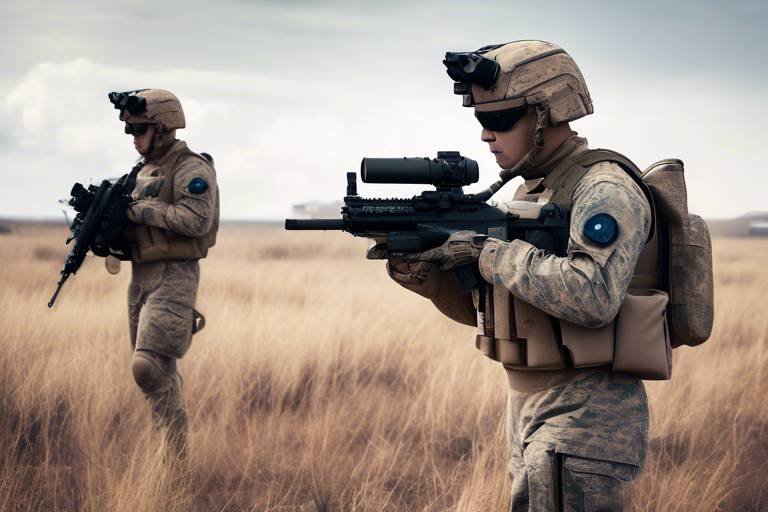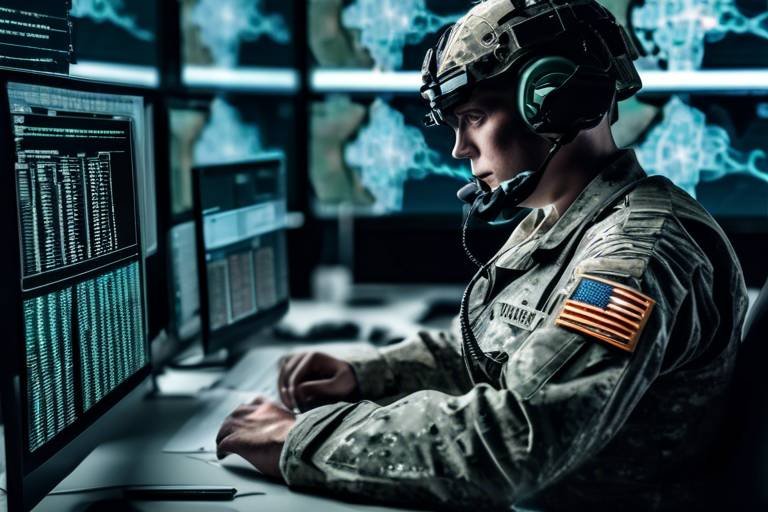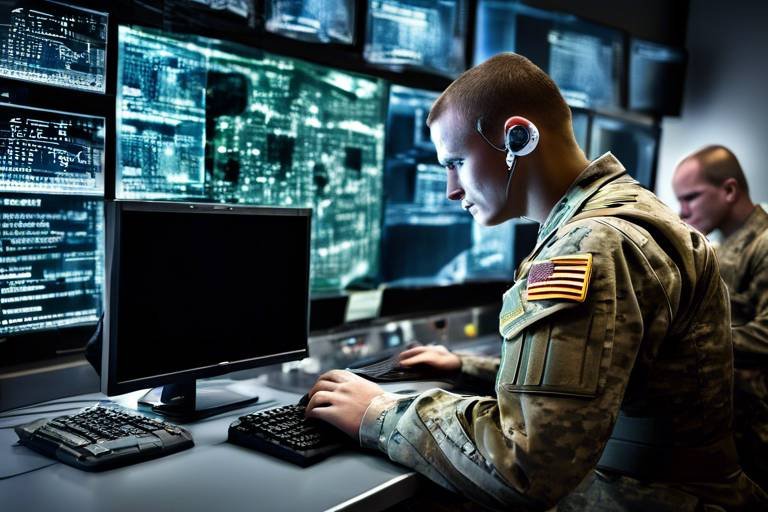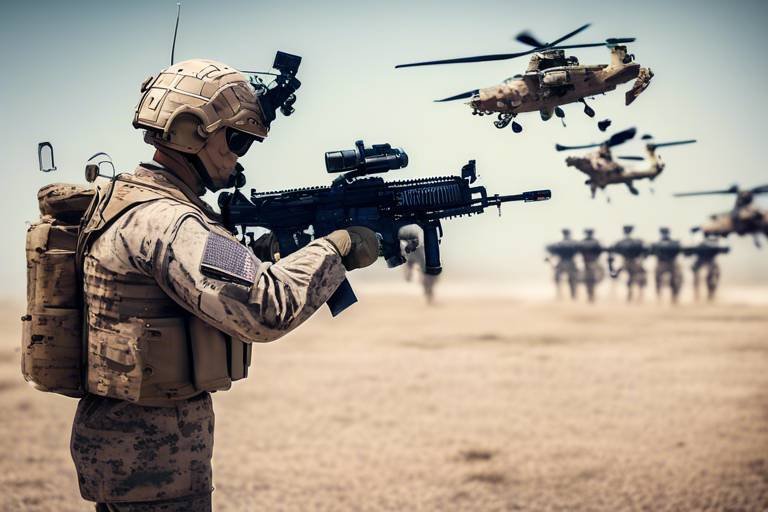Exploring AI-Based Command and Control Systems for Modern Armies
In the rapidly evolving landscape of modern warfare, the integration of Artificial Intelligence (AI) into military command and control systems is nothing short of revolutionary. Imagine a battlefield where decisions are made not just by human intuition but also by intelligent systems that can analyze vast amounts of data in real-time. This transformation is not merely a trend; it represents a profound shift in how armies operate, strategize, and respond to threats. The potential for AI to enhance situational awareness, streamline communication, and optimize resource allocation is immense, paving the way for a new era of military effectiveness.
But what does this really mean for the soldiers on the ground and the commanders in the field? It means that the fog of war could be lifted, replaced by clear insights derived from data analytics and predictive modeling. Imagine having a virtual assistant that can sift through endless streams of intelligence reports, social media feeds, and satellite imagery to provide actionable recommendations. This is the promise of AI-based command and control systems, and it is reshaping the very foundations of military strategy.
However, as we dive deeper into this topic, we must also consider the challenges that come with such advancements. The integration of AI brings forth concerns about cybersecurity, ethical implications, and the necessity for comprehensive training programs. Military leaders must navigate these waters carefully, ensuring that while they harness the power of AI, they do not compromise the integrity of their operations or the safety of their personnel.
As we explore the evolution of command and control systems, it’s essential to recognize that this journey has been ongoing for decades. From the early days of radio communication to the sophisticated networks we have today, technology has always played a crucial role in military operations. AI is simply the next step in this continuum, enhancing capabilities that were once thought to be the realm of science fiction.
So, what does the future hold for AI in military operations? As we look ahead, we can expect to see even greater integration of AI with emerging technologies such as drones and robotics. This convergence will not only enhance operational capabilities but also redefine traditional military tactics. The potential for fully autonomous systems raises both exciting possibilities and significant challenges, prompting critical discussions about the balance between human oversight and machine autonomy.
In conclusion, the exploration of AI-based command and control systems for modern armies reveals a landscape rich with potential and fraught with challenges. As we stand on the brink of this new era, it is vital for military organizations to embrace these advancements while remaining vigilant about the implications they carry. The journey has just begun, and the possibilities are as vast as the battlefield itself.
- What are AI-based command and control systems?
AI-based command and control systems utilize artificial intelligence technologies to improve decision-making processes, enhance situational awareness, and streamline communication within military operations. - How does AI improve military operations?
AI improves military operations by analyzing large datasets in real-time, providing predictive analytics, and facilitating rapid decision-making, which can lead to more effective responses to threats. - What are the challenges of implementing AI in the military?
Challenges include cybersecurity risks, ethical considerations regarding autonomous decision-making, and the need for robust training programs for personnel to effectively use AI technologies. - What is the future of AI in military applications?
The future of AI in military applications is expected to involve greater integration with emerging technologies, leading to enhanced operational capabilities and potentially fully autonomous systems.
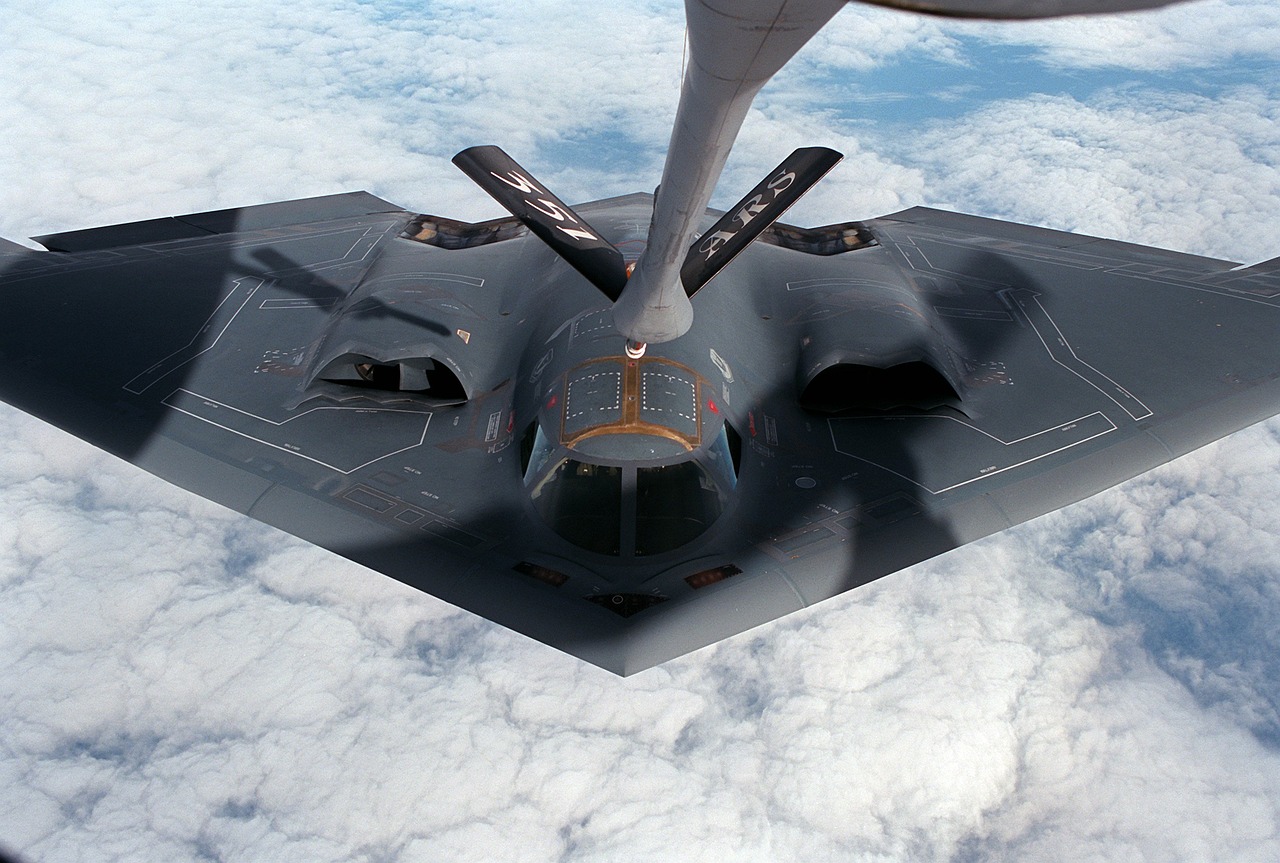
The Evolution of Command and Control Systems
Understanding the historical development of command and control systems is crucial for appreciating the transformative impact of artificial intelligence (AI) in modern military operations. Command and control (C2) has evolved significantly over the decades, transitioning from rudimentary systems reliant on manual processes to sophisticated frameworks that leverage cutting-edge technology. In the early days, military leaders communicated through messengers and signal flags, which, while effective, were slow and prone to errors. As technology advanced, so did the methods of communication, leading to the introduction of telegraphs and radios, which allowed for quicker and more reliable exchanges of information.
Fast forward to the 20th century, and we see the emergence of computerized systems that revolutionized how military operations were conducted. The integration of computers into command and control systems allowed for the storage and analysis of vast amounts of data, which in turn enhanced situational awareness for commanders on the battlefield. This period marked a significant shift, where the emphasis moved from mere communication to the effective management of information. Military leaders began to realize that having access to real-time data could be the difference between victory and defeat.
With the advent of the internet and networking technologies, command and control systems became even more interconnected. Modern militaries now utilize a plethora of sensors, satellites, and drones to gather intelligence and provide actionable insights. This interconnectedness is not just about gathering data; it’s about synthesizing it into coherent strategies that can be executed rapidly. The ability to analyze battlefield conditions in real-time has fundamentally changed military tactics, allowing for more agile and adaptive responses to threats.
As we delve deeper into the 21st century, the integration of artificial intelligence into command and control systems represents the next frontier. AI technologies are transforming how data is processed and decisions are made. For instance, machine learning algorithms can analyze patterns in historical data to predict future outcomes, enabling commanders to make informed decisions based on predictive analytics. This capability is akin to having a seasoned strategist at your side, analyzing every move and suggesting the best course of action.
Moreover, the evolution of command and control systems has also led to the development of joint command structures, where multiple branches of the military can operate seamlessly together. This cooperation is vital in modern warfare, where operations often require coordinated efforts across various domains, including land, air, and sea. The integration of AI into these joint operations enhances communication and ensures that all units are operating with the same level of situational awareness.
Ultimately, the evolution of command and control systems reflects a broader trend towards technological integration in military operations. As AI continues to advance, we can expect even more revolutionary changes that will redefine how modern armies strategize and execute their missions. The journey from simple communication methods to complex AI-driven systems illustrates not only the progress made but also the potential for future innovations that could further enhance military effectiveness.
- What are command and control systems? Command and control systems are frameworks used by military leaders to direct forces and make informed decisions based on real-time data and intelligence.
- How has AI impacted military command and control? AI enhances decision-making processes, improves situational awareness, and facilitates real-time responses to dynamic battlefield conditions.
- What challenges do military AI systems face? Key challenges include cybersecurity risks, ethical considerations, and the need for robust training programs to ensure effective use of AI technologies.
- What is the future of AI in military operations? The future is likely to involve greater integration of AI with emerging technologies, leading to innovations that will redefine military strategies and operational capabilities.
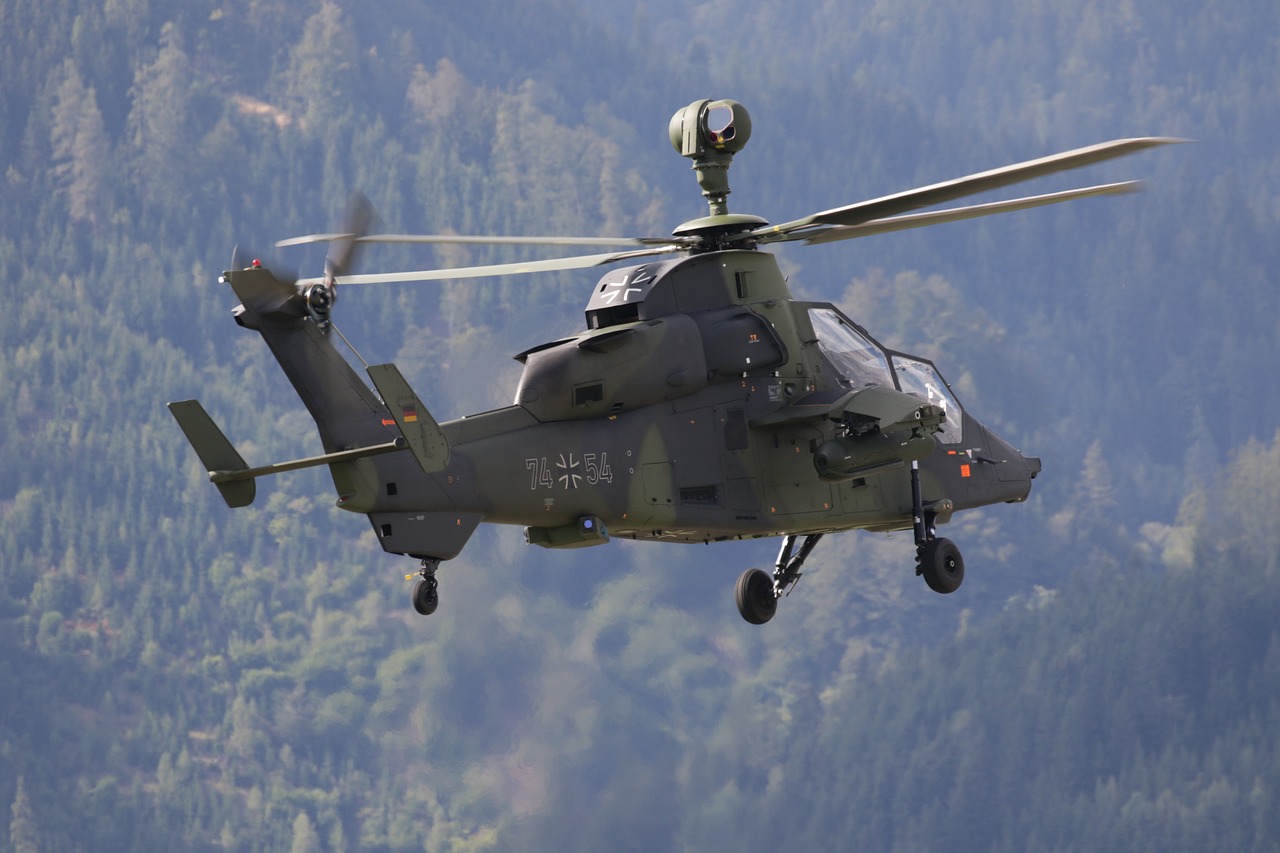
AI Technologies in Military Applications
The integration of artificial intelligence (AI) into military applications is revolutionizing how armed forces operate. With the ability to process vast amounts of data and learn from it, AI technologies are enhancing decision-making processes, improving operational efficiency, and providing a competitive edge on the battlefield. Imagine a scenario where commanders can predict enemy movements, assess risks, and allocate resources with pinpoint accuracy—all thanks to the sophisticated algorithms that AI offers. This is not just a dream of the future; it’s happening now.
At the heart of these advancements are two major AI technologies: Machine Learning (ML) and Natural Language Processing (NLP). Each plays a pivotal role in enhancing military command and control systems. Machine learning algorithms are designed to analyze data patterns, enabling predictive analytics that can foresee potential threats and opportunities. For instance, by utilizing data from previous engagements, ML can help military leaders understand the likelihood of certain outcomes based on current battlefield conditions.
Machine learning algorithms are particularly effective in military settings where real-time data analysis is crucial. These algorithms process information from various sources, such as satellite imagery, drone surveillance, and ground sensors, to provide a comprehensive view of the operational landscape. By continuously learning from new data, these systems improve their accuracy over time, ultimately enhancing situational awareness and operational efficiency.
Effective data collection techniques are vital for the success of machine learning applications. Military operations generate enormous amounts of data, but without proper collection and processing strategies, this data can become overwhelming. Techniques such as sensor fusion, where data from multiple sensors is combined, and data mining, which involves extracting useful information from large datasets, ensure that machine learning algorithms have access to relevant and accurate information. This is akin to a chef gathering the finest ingredients before preparing a gourmet meal—quality data leads to quality insights.
One of the most significant advantages of AI-driven systems is their ability to facilitate real-time decision-making. In the fast-paced world of military operations, conditions can change in an instant. AI systems can quickly analyze incoming data and provide actionable insights, allowing military leaders to respond promptly to dynamic battlefield conditions. This capability is akin to having a seasoned advisor who can sift through mountains of information and highlight the most critical points, enabling commanders to make informed decisions swiftly.
Natural Language Processing (NLP) is another crucial technology in military applications. It enhances communication within command and control systems, enabling seamless interaction between operators and AI systems. For example, NLP can be used to interpret and respond to voice commands, making it easier for personnel to interact with complex systems without needing extensive training. This technology not only streamlines operations but also reduces the cognitive load on military personnel, allowing them to focus on strategic tasks rather than getting bogged down by technical details.
As AI technologies continue to evolve, their applications in military contexts will only expand. From enhancing communication to improving predictive analytics, the potential is vast. However, as with any powerful tool, it’s essential to approach these advancements with a sense of responsibility, ensuring that they are used ethically and effectively.
- What is the primary benefit of AI in military applications?
AI enhances decision-making by providing real-time data analysis and predictive insights, improving situational awareness on the battlefield. - How does machine learning improve military operations?
Machine learning algorithms analyze vast amounts of data to identify patterns and predict outcomes, which helps military leaders make informed decisions quickly. - What role does natural language processing play in military command?
NLP facilitates communication between operators and AI systems, allowing for intuitive interactions and reducing the need for extensive training.
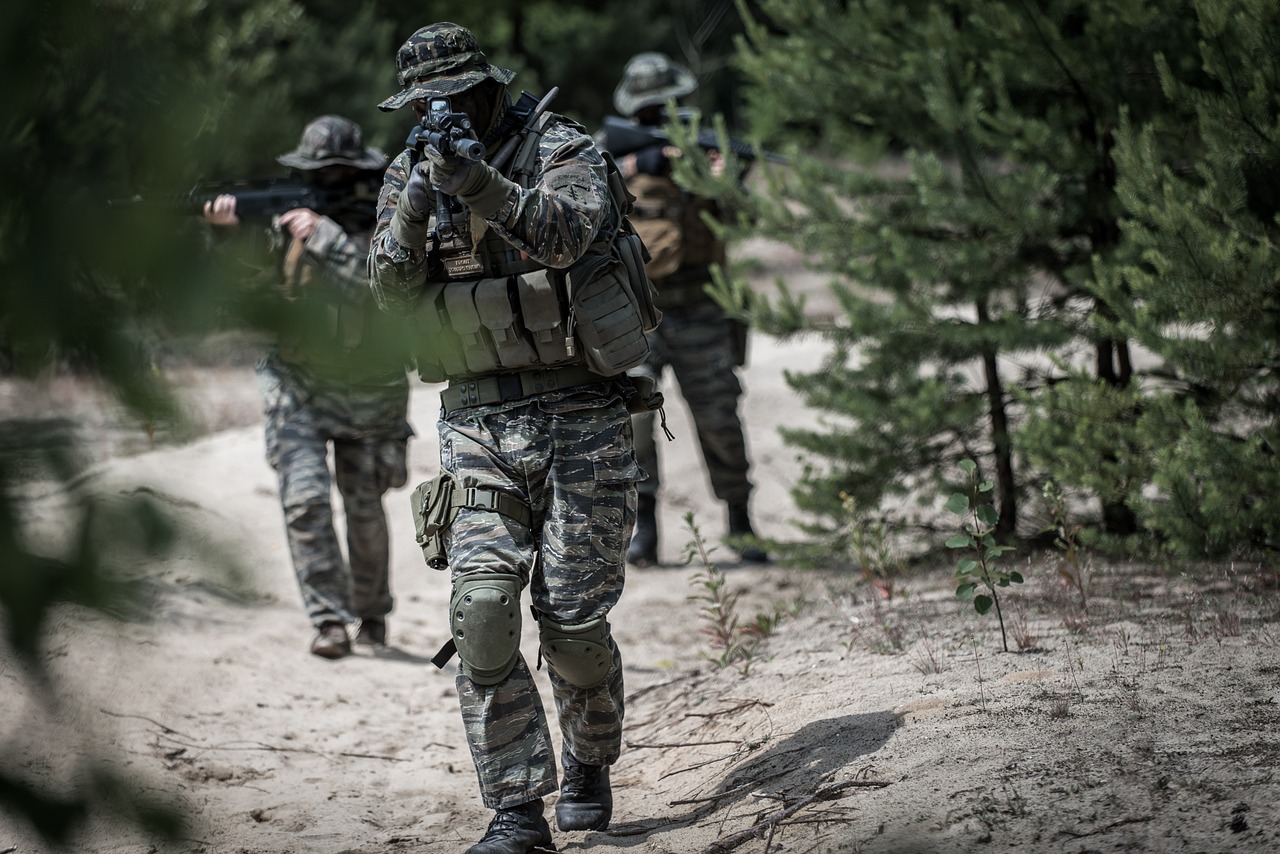
Machine Learning Algorithms
Machine learning algorithms have revolutionized the way military command and control systems operate. By leveraging vast amounts of data, these algorithms can identify patterns and make predictions that significantly enhance operational efficiency. Imagine being able to predict enemy movements or assess potential threats before they even materialize; that’s the power of machine learning in action. It’s like having a crystal ball that provides military leaders with insights derived from real-time data analysis.
One of the core advantages of machine learning algorithms is their ability to perform predictive analytics. These algorithms analyze historical data, current battlefield dynamics, and even social media feeds to forecast future scenarios. For instance, they can assess troop movements and predict where an enemy might strike next. This not only improves situational awareness but also allows commanders to allocate resources more effectively, ensuring that troops are positioned optimally to respond to threats.
To fully harness the potential of machine learning, effective data collection techniques are essential. The quality and relevance of data directly influence the accuracy of predictions made by these algorithms. Military operations generate a plethora of data from various sources, including satellite imagery, reconnaissance reports, and sensor data. By employing advanced data collection methods, such as:
- Automated data ingestion from multiple sources
- Real-time sensor data acquisition
- Integration of IoT devices for enhanced situational awareness
the military can ensure that machine learning algorithms have access to the most accurate and timely information. This is crucial because even the most advanced algorithms are only as good as the data they analyze.
Another exciting aspect of machine learning in military contexts is its capacity for real-time decision making. In the heat of battle, every second counts. AI-driven systems can process information at lightning speed, allowing military leaders to make informed decisions rapidly. For example, if an unexpected enemy unit appears on the radar, machine learning algorithms can quickly analyze the situation, suggest tactical responses, and even simulate outcomes based on different strategies. This capability transforms the traditional command structure, enabling a more agile and responsive military force.
In conclusion, machine learning algorithms are not just a technological advancement; they represent a fundamental shift in how military operations are conducted. By enhancing predictive capabilities, ensuring effective data collection, and enabling real-time decision-making, these algorithms empower military leaders to operate with a level of precision and foresight that was previously unimaginable. As we continue to explore the integration of AI into military command and control systems, the potential for machine learning to shape the future of warfare is both exciting and profound.
- What are machine learning algorithms?
Machine learning algorithms are computational methods that enable systems to learn from data and make predictions or decisions without being explicitly programmed. - How do machine learning algorithms improve military operations?
They enhance predictive analytics, improve situational awareness, and facilitate real-time decision-making, allowing military leaders to respond to threats more effectively. - What types of data are used in military machine learning applications?
Data can include satellite imagery, reconnaissance reports, sensor data, and even social media feeds, all of which contribute to a comprehensive understanding of the battlefield. - Are there any risks associated with using machine learning in the military?
Yes, challenges include data security concerns, the need for robust training programs, and ethical implications regarding the use of AI in warfare.

Data Collection Techniques
In the realm of military command and control systems, the effectiveness of AI-driven solutions hinges significantly on the quality of data collected. Imagine trying to build a skyscraper without a solid foundation; it simply won't stand. Similarly, form the bedrock of machine learning algorithms, enabling them to analyze and interpret vast amounts of information accurately. The military employs a variety of sophisticated methods to gather data, ensuring that decision-makers have access to the most relevant and timely information.
One of the primary techniques used is sensor networks. These networks consist of a myriad of devices capable of collecting data from various environments. For instance, unmanned aerial vehicles (UAVs) equipped with high-resolution cameras can capture real-time images and videos of a battlefield, while ground sensors can monitor troop movements and environmental conditions. The data collected from these sensors is then transmitted to command centers for further analysis, providing military leaders with a comprehensive situational picture.
Moreover, open-source intelligence (OSINT) has gained traction in recent years. This involves gathering information from publicly available sources, such as social media, news articles, and online forums. By analyzing this data, military analysts can gain insights into enemy movements, public sentiment, and potential threats. In a world where information spreads like wildfire, leveraging OSINT can be a game-changer in anticipating and countering adversarial actions.
Another crucial aspect of data collection is integration with existing databases. Military organizations often maintain extensive databases that contain historical data, intelligence reports, and logistical information. By integrating real-time data collected from sensors and OSINT with these databases, military leaders can enhance their understanding of ongoing operations. This fusion of data allows for more informed decision-making, ultimately leading to improved operational outcomes.
However, it's essential to recognize that data collection is not without its challenges. The sheer volume of data can be overwhelming, leading to what is often termed as information overload. To combat this, AI systems must be equipped with advanced filtering and processing capabilities to sift through the noise and highlight the most critical information. In this regard, the role of machine learning algorithms becomes pivotal, as they can identify patterns and trends within the data, allowing military personnel to focus on actionable insights.
In conclusion, the effectiveness of AI in military command and control systems is heavily reliant on robust data collection techniques. From sensor networks and OSINT to the integration of existing databases, each method plays a vital role in ensuring that military leaders have the information they need to make timely and informed decisions. As technology continues to evolve, so too will the methods used to gather data, ultimately enhancing the capabilities of modern armies in an increasingly complex battlefield.
- What are the primary data collection techniques used in military operations?
The main techniques include sensor networks, open-source intelligence (OSINT), and integration with existing databases.
- How does AI improve data analysis in military command systems?
AI enhances data analysis by identifying patterns and trends, allowing for better decision-making and operational efficiency.
- What challenges are associated with data collection in military contexts?
Challenges include information overload, ensuring data accuracy, and maintaining cybersecurity to protect sensitive information.

Real-Time Decision Making
In the fast-paced environment of modern warfare, the ability to make real-time decisions is not just an advantage; it’s a necessity. With the battlefield constantly evolving, military leaders must adapt quickly to changing circumstances. This is where AI-driven systems come into play, transforming how decisions are made. Imagine standing on a battlefield where every second counts, and you have a digital assistant that processes vast amounts of data in mere moments. This is the power of AI in real-time decision-making.
AI systems leverage advanced algorithms to analyze data from various sources such as satellite imagery, reconnaissance reports, and sensor data. By synthesizing this information, they provide commanders with actionable insights that can significantly enhance situational awareness. For instance, if an enemy unit is detected moving towards a strategic location, an AI system can quickly assess the threat level, suggest tactical responses, and even predict potential outcomes based on historical data. This capability allows military leaders to make informed decisions swiftly, potentially altering the course of engagements.
Moreover, real-time decision-making isn't just about speed; it’s also about accuracy. AI tools can minimize human error by presenting data in a clear and concise manner. Consider the complexity of coordinating multiple units in a combat scenario. AI can help streamline communication and ensure that every unit is operating with the same information. This level of coordination is crucial, especially when lives are on the line. For example, during a military operation, AI can facilitate immediate updates to troop movements or changes in mission objectives, ensuring that all personnel are informed and can react accordingly.
However, the integration of AI in decision-making processes does come with its own set of challenges. One of the primary concerns is the reliability of the data being analyzed. If the input data is flawed or biased, the decisions made based on that data could lead to disastrous outcomes. Therefore, establishing robust data collection techniques is essential. Military organizations must ensure that the data fed into AI systems is accurate, relevant, and timely.
To illustrate the impact of real-time decision-making powered by AI, consider the following table that outlines the key benefits:
| Benefit | Description |
|---|---|
| Speed | AI processes data rapidly, allowing for immediate tactical adjustments. |
| Accuracy | Reduces human error by presenting data clearly and concisely. |
| Coordination | Enhances communication among units, ensuring everyone is on the same page. |
| Predictive Analysis | AI can forecast potential outcomes based on historical data. |
In conclusion, the integration of AI into military command and control systems is revolutionizing real-time decision-making. By harnessing the power of AI, military leaders can not only respond to threats more effectively but also anticipate them. As we move forward, it will be crucial to address the challenges associated with data reliability and ethical implications to fully realize the potential of AI in military operations.
- How does AI improve situational awareness?
AI analyzes vast amounts of data from various sources in real-time, providing commanders with actionable insights and a clearer understanding of the battlefield. - What are the risks associated with AI in military decision-making?
Key risks include data reliability, potential biases in algorithms, and ethical concerns regarding accountability in autonomous systems. - Will AI completely replace human decision-makers in the military?
While AI can enhance decision-making processes, human oversight remains crucial to ensure ethical considerations and accountability in military operations.

Natural Language Processing
Natural Language Processing, or NLP, is a fascinating branch of artificial intelligence that focuses on the interaction between computers and humans through natural language. Imagine a world where military personnel can communicate seamlessly with AI systems, where orders are understood and executed without the usual barriers of language. This isn't just a sci-fi dream; it's becoming a reality in modern military command and control systems. By leveraging NLP, military operations can achieve enhanced communication, reducing the chances of misunderstandings that could lead to critical errors on the battlefield.
One of the most significant advantages of NLP in military applications is its ability to process vast amounts of unstructured data. In a typical military operation, communication can come from various sources—reports, radio transmissions, and even social media. NLP algorithms can sift through this data, extracting relevant information and presenting it in a comprehensible format. This capability not only saves time but also improves situational awareness for commanders, allowing them to make informed decisions quickly.
Furthermore, NLP facilitates real-time communication between operators and AI systems. For instance, a commander can issue commands in natural language, and the AI can interpret these instructions and execute them accordingly. This level of interaction is crucial in high-pressure situations where every second counts. The AI's ability to understand context, tone, and intent means that it can respond to commands more effectively, enhancing the overall efficiency of military operations.
However, it's essential to recognize that the implementation of NLP in military settings is not without its challenges. The accuracy of NLP systems depends heavily on the quality of the data they are trained on. If the training data is biased or incomplete, the AI's performance could be compromised, leading to potentially disastrous outcomes. Therefore, rigorous testing and continuous improvement of NLP systems are vital to ensure they meet the high standards required in military applications.
In summary, the integration of NLP into military command and control systems marks a significant leap forward in operational effectiveness. By enabling more intuitive communication between humans and machines, NLP enhances decision-making processes and situational awareness. As technology continues to evolve, we can expect NLP to play an increasingly pivotal role in shaping the future of military operations.
- What is Natural Language Processing?
NLP is a field of artificial intelligence that focuses on the interaction between computers and human language, enabling machines to understand and respond to text or voice data. - How does NLP improve military communication?
NLP enhances military communication by allowing personnel to interact with AI systems in natural language, streamlining command execution and reducing misunderstandings. - What are the challenges of implementing NLP in military systems?
The primary challenges include ensuring the accuracy of NLP systems, the quality of training data, and addressing potential biases that could affect decision-making. - Can NLP systems operate in real-time?
Yes, NLP systems can process and interpret commands in real-time, allowing for quick responses in dynamic military environments.

Challenges of Implementing AI in Military Systems
As we venture into the realm of AI in military command and control systems, it’s essential to recognize that with great power comes great responsibility. While AI offers a plethora of benefits, integrating it into military frameworks is not without its challenges. These challenges can be likened to a double-edged sword; on one side, we have the promise of enhanced efficiency and decision-making speed, but on the other, we face significant hurdles that could compromise operational integrity and ethical standards.
One of the primary concerns is cybersecurity. With the increasing reliance on AI systems, the military becomes a more enticing target for cyber-attacks. Imagine a scenario where an enemy could hack into a military AI system, manipulating data or redirecting commands. This not only jeopardizes missions but also places soldiers' lives at risk. Therefore, safeguarding sensitive military data from breaches is paramount. Organizations must invest heavily in robust cybersecurity measures to protect against potential threats, ensuring that AI systems are fortified against unauthorized access.
Another pressing issue is the ethical implications surrounding the use of AI in military operations. The deployment of AI raises profound questions about accountability. For instance, if an AI system makes a decision that leads to unintended consequences, who is responsible? Is it the programmer, the military leader, or the machine itself? These questions become even more complicated when considering the potential for autonomous warfare. The idea that machines could independently make life-and-death decisions is a daunting thought that requires careful deliberation and the establishment of clear guidelines.
Furthermore, the integration of AI necessitates comprehensive training programs for military personnel. It’s not enough to simply implement AI technologies; soldiers and commanders must be adept at understanding and utilizing these systems effectively. This means that training needs to evolve continuously, keeping pace with technological advancements. The challenge lies in ensuring that all personnel are adequately prepared to operate within an AI-enhanced environment, which can be resource-intensive and time-consuming.
In summary, while the integration of AI into military command and control systems holds immense potential, it is accompanied by significant challenges that must be addressed. From cybersecurity threats to ethical dilemmas and the need for rigorous training, these issues require careful consideration and strategic planning. The military must navigate these obstacles thoughtfully, ensuring that the advantages of AI do not come at the cost of operational security or ethical integrity.
- What are the main challenges of implementing AI in military systems? The main challenges include cybersecurity risks, ethical implications, and the need for comprehensive training programs for personnel.
- How can cybersecurity be improved in AI military systems? By investing in robust cybersecurity measures, conducting regular audits, and ensuring that personnel are trained in cybersecurity protocols.
- What ethical considerations are there with AI in military operations? Ethical considerations include accountability for decisions made by AI, the potential for autonomous warfare, and the implications of machine-operated decision-making.
- Why is training important for military personnel using AI? Training is crucial to ensure that personnel can effectively operate and understand AI systems, thereby maximizing their operational capabilities while minimizing risks.

Cybersecurity Concerns
The integration of AI in military command and control systems brings about a myriad of that cannot be overlooked. As these advanced technologies become more prevalent, they also become attractive targets for cybercriminals and hostile nations. Imagine a battlefield where the enemy can manipulate AI systems to gain an upper hand; that scenario is not as far-fetched as it seems. The sophistication of cyber threats is evolving at a pace that often outstrips our defensive capabilities, making it critical for military organizations to stay one step ahead.
One of the primary concerns is the potential for data breaches. Sensitive military data, if compromised, can lead to disastrous consequences, including the loss of operational integrity and strategic advantage. Moreover, the reliance on interconnected systems means that a breach in one area could have a cascading effect on other systems. For instance, if an AI-controlled drone's data is intercepted, it could provide adversaries with insights into military strategies and capabilities.
Additionally, the complexity of AI algorithms themselves introduces vulnerabilities. These systems are often seen as 'black boxes' where the decision-making process is not entirely transparent. This lack of visibility can make it challenging to identify and mitigate malicious interventions. Cyber attackers could exploit these weaknesses, injecting false data or manipulating algorithms to produce erroneous outcomes. The implications of such manipulations can be catastrophic, leading to misguided actions in critical situations.
To combat these cybersecurity risks, military organizations must invest in robust security measures. This includes:
- Regularly updating software and systems to patch vulnerabilities.
- Implementing advanced encryption techniques to protect data.
- Conducting rigorous training programs for personnel to recognize and respond to cyber threats.
- Establishing incident response teams that can act swiftly in the event of a breach.
Furthermore, collaboration with cybersecurity experts and private sector innovators can enhance the resilience of military AI systems. By pooling resources and knowledge, the military can develop more sophisticated defenses against cyber threats. In essence, the fight against cybercrime is a team effort, requiring constant vigilance and adaptation to new tactics employed by adversaries.
As we look to the future, addressing these cybersecurity concerns will be paramount. The stakes are incredibly high, and the consequences of inaction are too severe to ignore. The military must prioritize cybersecurity as a core component of its AI strategy, ensuring that as we advance technologically, we also fortify our defenses against those who would seek to exploit these innovations for malicious purposes.
- What are the main cybersecurity risks associated with AI in military operations?
The primary risks include data breaches, manipulation of AI algorithms, and the potential for adversaries to exploit vulnerabilities in interconnected systems. - How can military organizations enhance their cybersecurity measures?
By implementing regular software updates, advanced encryption, personnel training, and establishing incident response teams. - Why is transparency in AI algorithms important?
Transparency helps in identifying vulnerabilities and understanding the decision-making process, reducing the risk of malicious interventions. - What role does collaboration play in addressing cybersecurity concerns?
Collaboration with cybersecurity experts and the private sector can lead to the development of more sophisticated defenses, enhancing overall security.

Ethical Implications
The integration of Artificial Intelligence (AI) into military operations has sparked a heated debate about the that accompany this technological advancement. As we venture further into an era where machines can make decisions on the battlefield, we must pause and reflect on the moral responsibilities that come with such power. Can we truly trust AI to make life-and-death decisions? This question becomes even more pressing when we consider the potential for autonomous warfare, where machines operate without human intervention.
One of the primary ethical concerns revolves around accountability. If an AI system makes a mistake that results in civilian casualties, who is held responsible? Is it the programmer who designed the algorithm, the military personnel who deployed it, or the machine itself? This ambiguity complicates the landscape of military ethics and raises questions about the rule of law in warfare. In traditional combat, accountability is relatively clear-cut; however, the introduction of AI complicates this framework significantly.
Moreover, the potential for bias in AI systems is another critical concern. AI algorithms are trained on historical data, which can reflect existing biases within military strategies and decision-making processes. If these biases are not addressed, AI could inadvertently perpetuate injustices, leading to disproportionate impacts on specific populations. For instance, if an AI system is trained predominantly on data from one demographic, it may not perform optimally in diverse environments, potentially leading to miscalculations and unintended consequences.
Furthermore, the lack of transparency in AI decision-making processes poses significant ethical dilemmas. Many AI systems operate as "black boxes," where the rationale behind their decisions is not easily understood by humans. This opacity can lead to mistrust among military personnel and the general public. How can we ensure that AI systems are making ethical decisions if we cannot comprehend their reasoning? This lack of clarity necessitates the development of guidelines and frameworks that promote transparency and accountability in AI usage.
As we consider the future of AI in military operations, it is essential to engage in discussions about the ethical implications of these technologies. Establishing comprehensive guidelines and regulations can help mitigate risks while ensuring that AI serves as a tool for enhancing human decision-making rather than replacing it entirely. The military must prioritize the development of ethical standards that govern AI use, ensuring that technology aligns with humanitarian principles and international law.
In conclusion, while the integration of AI into military command and control systems offers numerous advantages, it is crucial to navigate the ethical landscape carefully. By addressing accountability, bias, transparency, and the potential for autonomous warfare, we can harness the power of AI responsibly and ethically, ensuring that it serves to protect rather than harm.
- What are the main ethical concerns regarding AI in military operations?
The main concerns include accountability for decisions made by AI, potential biases in AI algorithms, lack of transparency in decision-making processes, and the implications of autonomous warfare. - How can we ensure accountability when AI makes decisions?
Establishing clear guidelines and frameworks that define roles and responsibilities is essential for accountability in AI-driven military operations. - What steps can be taken to mitigate bias in AI systems?
Regular audits of AI training data, inclusive data collection practices, and diverse testing environments can help identify and reduce bias in AI systems. - Why is transparency important in AI decision-making?
Transparency fosters trust among military personnel and the public, ensuring that AI systems are held to ethical standards and that their decisions can be understood and scrutinized.

The Future of AI in Military Operations
As we gaze into the crystal ball of military innovation, it's crystal clear that AI is set to revolutionize how modern armies operate. The integration of artificial intelligence into military command and control systems is not just a trend; it's a transformative leap that promises to redefine strategic frameworks and operational efficiency. Imagine a battlefield where decisions are made in the blink of an eye, powered by algorithms that analyze data faster than any human could. This is not science fiction; this is the emerging reality of military operations.
One of the most exciting prospects is the integration of AI with other cutting-edge technologies. Drones and robotics are already being deployed in various capacities, but when paired with AI, their potential multiplies exponentially. For instance, consider a scenario where drones equipped with AI can autonomously survey a battlefield, identify threats, and relay critical information back to command centers in real-time. This synergy not only enhances situational awareness but also allows for more effective resource allocation, ensuring that military assets are used where they are most needed.
Furthermore, the potential for fully autonomous systems raises intriguing possibilities. While the idea of machines making life-and-death decisions may sound alarming, it also presents opportunities for increased efficiency and reduced risk to human soldiers. However, this leap into autonomy brings with it a host of challenges that must be navigated carefully. Balancing human oversight with machine autonomy is a delicate dance; after all, who is ultimately responsible for an autonomous system's actions? This question is not just theoretical—it's a pressing concern that military leaders must address as they consider the future of warfare.
To illustrate the potential impact of AI on military operations, consider the following table:
| Aspect | Traditional Military Operations | AI-Enhanced Military Operations |
|---|---|---|
| Decision-Making Speed | Hours to Days | Seconds to Minutes |
| Data Analysis | Manual, Time-Consuming | Real-Time, Automated |
| Risk to Personnel | High | Reduced through Automation |
| Coordination | Human-Centric | AI-Driven |
As we look to the future, it is essential to recognize that the journey towards AI integration in military operations is not without its hurdles. Ethical considerations, such as accountability and the implications of autonomous warfare, must be at the forefront of discussions among military strategists and policymakers. The balance between leveraging AI for enhanced operational capabilities and ensuring ethical standards is a tightrope that must be walked with care.
In conclusion, the future of AI in military operations is not just about technological advancement; it's about rethinking what it means to engage in warfare. With AI at the helm, we are on the brink of a new era where decisions are made faster, operations are coordinated more efficiently, and the potential for human risk is significantly diminished. As we embrace this new frontier, the military landscape will undoubtedly evolve, shaping the way conflicts are fought and peace is maintained.
- What are the main benefits of AI in military operations? AI enhances decision-making speed, improves data analysis, and reduces risks to personnel.
- What challenges does AI face in military applications? Key challenges include ethical considerations, cybersecurity risks, and the need for robust training programs.
- Will AI replace human soldiers in the future? While AI can automate many tasks, human oversight will remain crucial for ethical decision-making in warfare.
- How does AI improve situational awareness on the battlefield? AI processes vast amounts of data in real-time, providing commanders with timely and relevant information.
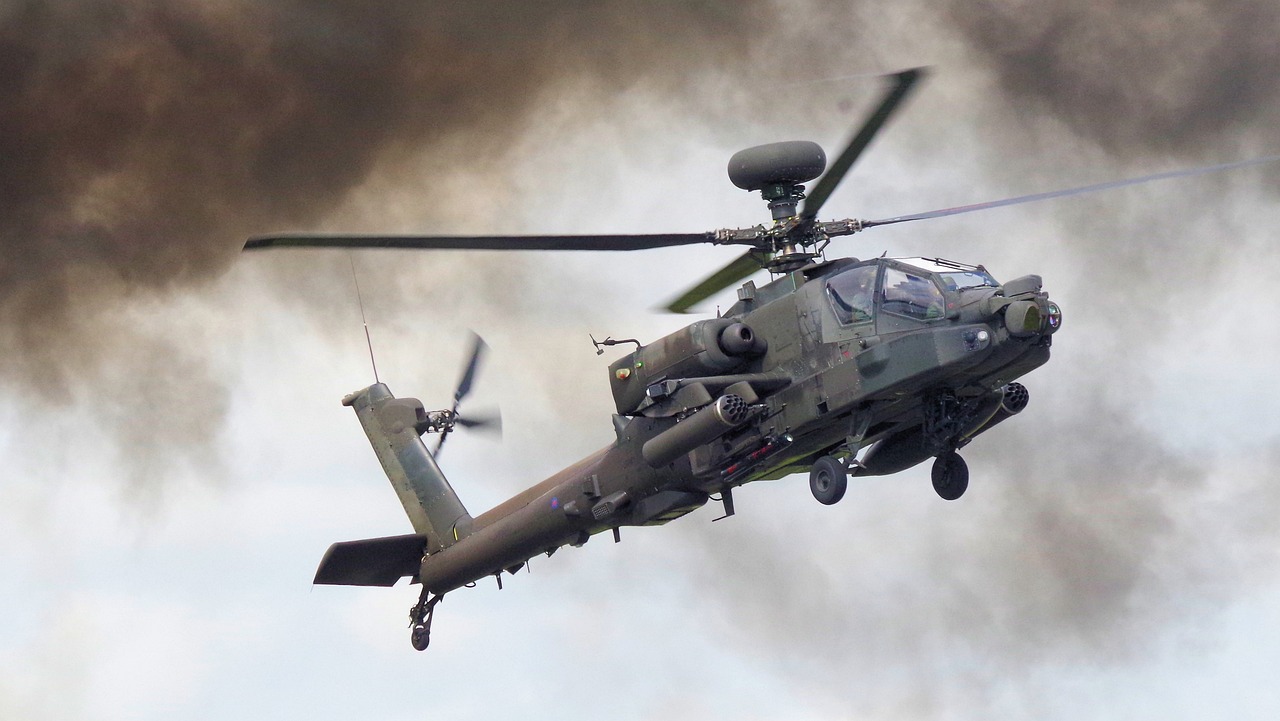
Integration with Emerging Technologies
The integration of AI with emerging technologies is revolutionizing the way modern armies operate, creating a synergy that enhances operational effectiveness and strategic planning. Imagine a battlefield where drones, equipped with AI, can autonomously scout enemy positions and relay vital information back to command centers in real-time. This scenario is not just a futuristic vision; it's becoming a reality as military organizations worldwide invest in cutting-edge technologies.
One of the most significant advancements is the collaboration between AI and robotics. Robots can perform tasks that are either too dangerous or too tedious for human soldiers, such as bomb disposal or reconnaissance missions. With AI algorithms guiding these machines, they can learn from their environments, adapt to changing conditions, and make decisions on the fly. This capability not only saves lives but also optimizes resource allocation, allowing human personnel to focus on more complex decision-making tasks.
Moreover, the integration of AI with Internet of Things (IoT) devices is transforming logistics and supply chain management in military operations. By utilizing sensors and data analytics, military forces can track equipment and supplies more efficiently, ensuring that troops have what they need when they need it. For instance, AI can predict supply shortages based on usage patterns and environmental factors, enabling proactive measures to be taken before a critical situation arises.
However, the integration of these technologies is not without its challenges. As armies adopt AI-driven systems, they must also invest in the necessary infrastructure and training to ensure that personnel can effectively operate and manage these sophisticated tools. The need for robust cybersecurity measures becomes paramount, as the more interconnected these systems are, the more vulnerable they become to cyber threats. Ensuring that data integrity and operational security are maintained is essential for the successful implementation of AI in military settings.
In conclusion, the integration of AI with emerging technologies like robotics and IoT is set to redefine military operations. By enhancing situational awareness, improving decision-making processes, and streamlining logistics, these technologies will enable modern armies to respond to threats more effectively and efficiently. As we look to the future, the possibilities are as vast as the challenges are complex, making it an exciting time for military innovation.
- What are the main benefits of integrating AI with military technologies?
Integrating AI enhances decision-making, improves operational efficiency, and increases situational awareness, allowing for rapid responses to dynamic battlefield conditions. - What challenges does the military face in adopting AI technologies?
Challenges include cybersecurity risks, ethical considerations, and the need for comprehensive training programs for personnel. - How does AI improve logistics in military operations?
AI can predict supply needs based on usage patterns, ensuring that troops have the necessary resources at the right time. - Are there ethical concerns regarding the use of AI in warfare?
Yes, ethical questions arise around accountability, decision-making, and the potential for autonomous warfare, which necessitate careful guidelines and considerations.
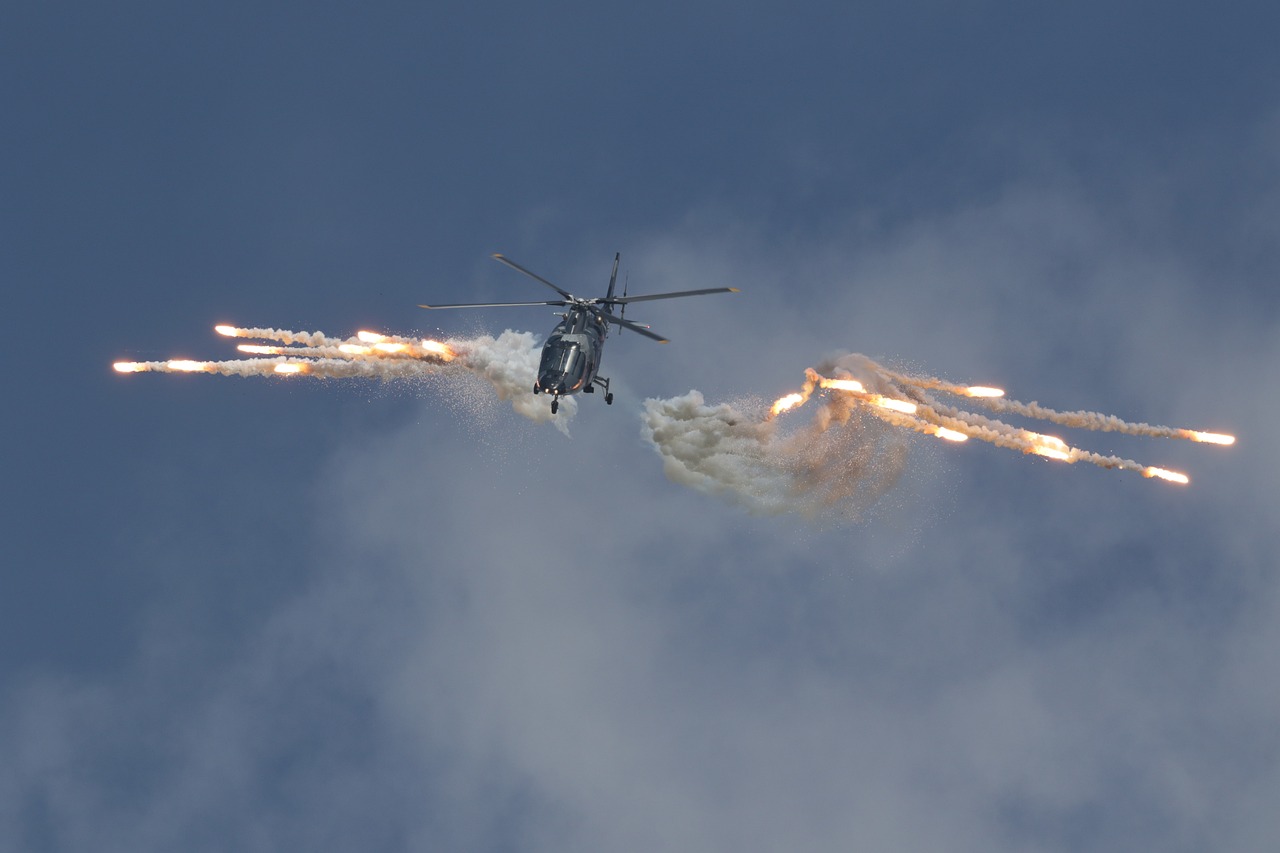
Potential for Autonomous Systems
The concept of autonomous systems in military operations is both exhilarating and daunting. Imagine a battlefield where drones and robots operate with minimal human intervention, making split-second decisions based on real-time data. This is not just a sci-fi fantasy; it's becoming a reality as advancements in AI technology pave the way for these systems. However, with great power comes great responsibility, and the balance between human oversight and machine autonomy is a critical discussion point.
Autonomous systems can significantly enhance operational efficiency and effectiveness. For instance, they can conduct surveillance missions over hostile territories without risking human lives. These systems can operate in environments that are too dangerous for soldiers, gathering intelligence and executing tasks that would otherwise be impossible. But, as we venture deeper into this territory, we must ask ourselves: what happens when machines make life-and-death decisions?
One of the most pressing concerns is the ethical implications of autonomous warfare. Who is accountable when an autonomous drone mistakenly targets civilians? This question raises significant ethical dilemmas that military leaders and policymakers must address. As we integrate these systems, we need to establish clear guidelines and frameworks to ensure accountability and transparency in decision-making processes.
Moreover, the potential for fully autonomous systems extends beyond just combat. They can be utilized in logistics, reconnaissance, and even battlefield medical assistance. For example, consider the use of autonomous supply drones that can deliver essential supplies to troops in remote areas without exposing them to enemy fire. This not only saves lives but also enhances the overall efficiency of military operations.
However, the integration of autonomous systems into military frameworks is not without its challenges. The technology must be robust enough to operate under various conditions and capable of making decisions that align with military objectives. Additionally, there is a need for rigorous training programs to ensure that human operators understand how to work alongside these systems effectively.
As we move forward, the dialogue surrounding autonomous systems must be inclusive, encompassing not just military personnel but also ethicists, technologists, and the public. The future of warfare is being shaped by these innovations, and it is crucial that we navigate this path thoughtfully and responsibly. The balance between leveraging the power of AI and maintaining human oversight is essential to ensure that we do not lose sight of our moral compass in the heat of battle.
- What are autonomous systems in military operations?
Autonomous systems refer to machines or devices that can operate independently without human intervention, making decisions based on pre-programmed algorithms and real-time data. - What are the benefits of using autonomous systems in the military?
They can enhance operational efficiency, reduce risks to human life, conduct surveillance, and perform logistics tasks in dangerous environments. - What ethical concerns are associated with autonomous military systems?
There are significant ethical implications regarding accountability for decisions made by machines, especially in life-and-death situations. - How can we ensure the responsible use of autonomous systems?
Establishing clear guidelines, frameworks for accountability, and involving various stakeholders in discussions about their integration is crucial for responsible use.
Frequently Asked Questions
- What are AI-based command and control systems?
AI-based command and control systems utilize artificial intelligence technologies to enhance decision-making, situational awareness, and operational efficiency in military environments. These systems analyze vast amounts of data in real-time to provide actionable insights for military leaders.
- How does machine learning improve military operations?
Machine learning improves military operations by enabling predictive analytics, which helps in identifying patterns and trends from historical data. This predictive capability enhances situational awareness, allowing commanders to make informed decisions swiftly in dynamic battlefield conditions.
- What role does natural language processing play in military command?
Natural language processing (NLP) facilitates effective communication between military personnel and AI systems. It allows for seamless interaction, ensuring that operators can easily convey commands and receive feedback, thus improving coordination and operational effectiveness.
- What are the main challenges in implementing AI in military systems?
The main challenges include cybersecurity risks, ethical implications, and the need for comprehensive training programs. Protecting sensitive data from cyber threats is crucial, while ethical considerations around accountability and autonomous warfare raise important questions that need addressing.
- How can military organizations ensure cybersecurity with AI systems?
Military organizations can ensure cybersecurity by implementing robust security protocols, conducting regular vulnerability assessments, and training personnel on the latest cybersecurity practices. Additionally, utilizing advanced encryption methods and continuous monitoring can help protect sensitive data from breaches.
- What does the future hold for AI in military operations?
The future of AI in military operations looks promising, with expectations of increased integration with emerging technologies like drones and robotics. This will enhance operational capabilities and lead to innovative strategies, although discussions on balancing human oversight with machine autonomy will be essential.
- Are there ethical concerns associated with autonomous military systems?
Yes, there are significant ethical concerns regarding autonomous military systems, particularly about accountability in decision-making and the potential for unintended consequences. These concerns necessitate the development of clear guidelines to govern the use of AI in military contexts.


